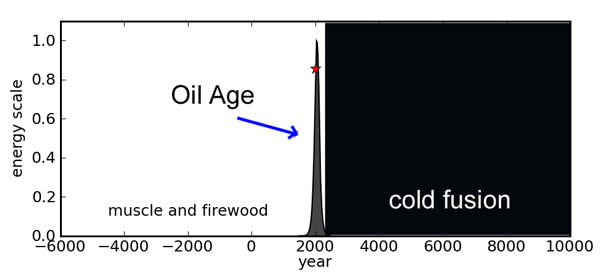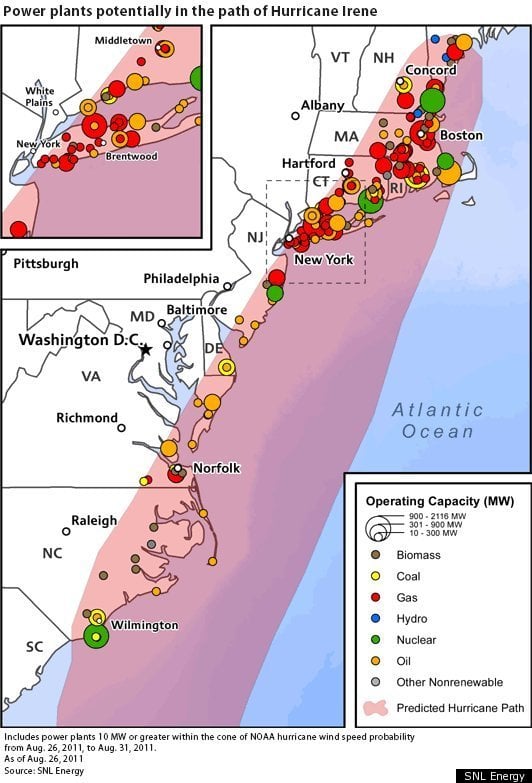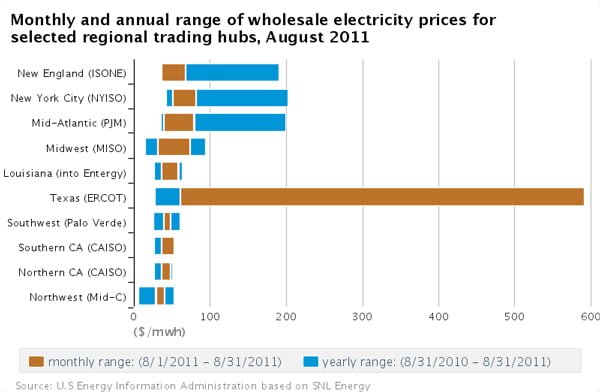Protected: Peak Spoilers
Mass power outages from superstorms no issue for cold fusion
Storms hit the US hard this past year.
In August, a large hurricane took an unusual path and dumped record amounts of rain up the whole of the eastern coast, saturating grounds and leaving more than 6 million people without electrical power.
Just days ago, an early snowstorm in the northeast of the country broke tree limbs still full of leaves, downing power lines that left 3 million without power.
A surprise two-feet of snow hit some areas and brought business-as-usual to a halt as residents were trapped in their homes, without electricity, and in some cases without heat. Consequently, schools, shops and businesses were closed and billions of dollars of economic damage is added to the infrastructural damage. Close to a dozen people were reportedly killed by fallen power lines and other storm-related circumstances.
As climate change brings more severs swings in weather, from extreme heat and drought to early frost and bitter snowstorms, we enter into the waning moments of both the current economic model and energy paradigm. The confluence of environmental crisis meets economic and energy collapse in what some call a Clusterf**k.
Dismay and despair fill the minds of those who’ve lost everything amidst the crises. Occupy Wall Street is criticized by the corporate media outlets as having no clear demands, but they’re just not listening. The ills of this lifestyle are too complex to be managed by a talking head in 5 seconds.
Or is it? The simple solution to our ecological, economic, and energy problems may be described in two seconds or less.
Cold fusion.
The radical new energy that can be generated on location, as needed, without the requirement of power lines and substations. That’s right, cold fusion technology means you generate your own power in your own house when you need it, not connected to any grid or centralized power plant. Robust and resiliant, cold fusion technology will be our energy go-to as the fossil fuel infrastructure fades away into ruin.
Cold fusion energy means:
NO centrally located coal plants.
NO centrally located nuclear plants using dangerous radioactive fuel.
NO high-voltage electricity substations.
NO power lines across the wilderness, in town, or on your street.
NO power companies monitoring your consumption and dictating your bill.
Cold fusion is disruptive technology that will change the energy industry from a centralized corporate hierarchy to a decentralized individual network. It is for this and other reasons that cold fusion science has been abandoned by the Department of Energy, a federal entity populated with oil and coal industry veterans as well as hot fusion enthusiasts.
Looking at all the power plants along the eastern US coast that were in the path of Hurricane Irene this year shows the risk that large centralized power plants pose.
Dangerous toxins from coal and coal ash, radioactive fuels, oil and gas pipeline ruptures, all pose a threat to the environment we live in.
Losing services due to weather related events risk the well-being of residents who relay on electricity to power medical devices, food refrigeration, and other important needs.
The economic toll becomes incalculable when homes, businesses, schools and government offices are without power.
This past August, as a hurricane hit the coast, the state of Texas was suffering from a long drought with more days of 100-degree-and-above temperatures than any year since records began. With the drought, farmers lost crops and cattle, wildlife suffered from lack of food and water, and costs shot up when electricity needs increased.
As our economy runs down the peak oil slope, higher fossil fuel costs, loss of jobs coupled with the exponential growth of paper money create human and ecological tragedies that are sure to continue, unless we change paths.
Cold fusion is a reaction that takes place between hydrogen and the atoms inside a solid metal. The metal is “host” to the reaction, but the atoms of the metal also take part in the energy-generating process.
The first commercial device to be released for industrial use runs on simple hydrogen, the main element in water, along with the metal nickel, just like the nickel in your pocket. Called a nickel-hydrogen exothermic reaction the device makes steam heat, heat is clean. There is no carbon dioxide emitted during the reaction.
A single 1 Megawatt nickel-hydrogen E-Cat, the cold fusion-based steam generator created by inventor Andrea A. Rossi, would consume about 20 kilograms of nickel powder and 36 kilograms of hydrogen each year with the only by-product is steam and hot water. The nickel is recyclable after six-months of operation.
On the other hand, a 1 Megawatt coal-fired power plant will burn 20,000 rail cars of coal each year. At 183.65 metric tons CO2 per railcar [see here], that’s 3.7 million metric tons of CO2 for 20,000 railcars.
Since a metric ton is 1000 kilograms, that 3.7 billion kilograms of CO2 emitted annually from a single 1 MW coal-fired power plant.
Nature is not finished with us. In fact, she’s only just begun. With 7 billion people on this planet extracting resources exponentially, climate change and extreme weather add another layer to the stressed social and economic systems.
Cold fusion offers a path to navigate the near-future crises that inevitably will affect our planet to a greater degree. And when storms take the power out, it offers a safe, clean, energy that you have the perogative to turn on and off at will, your will.
Cold Fusion Now!
Related Links
Edmund Storms on “Transition” Cold Fusion Now video October 24, 2011
The Answer to All Our Energy Problems video by Alien Scientist transcribed by Sterling Allan PESN
CO2 Emissions Report July 2000 from EIA
Emissions from Energy Consumption at Conventional Power Plants from EIA
Edmund Storms on “Transition”
The graph of the Oil Age shows a thin blip in geological time with an Era of Cold Fusion for the future – and a “little” space between them. 
The transition from dirty fossil fuels and today’s dangerous nuclear power plants into clean cold fusion will entail the dismantling of an entire infrastructure core to the economy and culture of the world, and particularly for the Western nations.
The scale and reach are staggering.
What would a transition narrative look like? Edmund Storms, LENR researcher and author of The Science of Low Energy Nuclear Reaction has thought about these issues for two decades, and has some compelling scenarios.
We spoke with Dr. Storms this past August and this is what he had to say on “Transition”.
Related Links
Oil Age lasted a century; Era of Cold Fusion to fuel millenia by Ruby Carat from Cold Fusion Now October 19, 2011
The Science of Low Energy Nuclear Reaction by Edmund Storms from World Scientific Books
Edmund Storms Kiva Labs YouTube channel
Edmund Storms on the Rossi device: “There will be a stampede.” portions of James Martinez March 1 interview transcribed by Ruby Carat from Cold Fusion Now March 4, 2011
Protected: Oil Age lasted a century; Era of Cold Fusion to fuel millenia.
Oil to Nickel: The E-Cat Energy Equivalence
[latexpage]
The claim:
1 gram of nickel can generate E-Cat energy equivalent to the energy generated by 517 kilograms of oil. [Here]
If the world consumes 89 million barrels of oil per day, how many ounces of nickel does that correspond to in E-Cat energy?
First, a barrel is a unit of volume and a gram is a unit of weight (technically mass).
A barrel of oil will weigh differently than a barrel of cotton because of the density of the material in it. (Density is mass per unit volume.)
So we need to know how many kilograms a barrel of oil weighs.
To find how much a barrel of oil weighs, we must know the density of the oil.
The density of oil varies.
We will take an average crude oil density value as $\rho = \frac{850 \text{\hspace{0.7 mm} kilograms}}{1 \text{\hspace{0.7 mm} cubic meters}}$.
Since $1 \text{\hspace{0.7 mm} cubic meter} = 264.17 \text{\hspace{0.7 mm} gallons}$ and there are $42 \text{\hspace{0.7 mm} gallons} = 1 \text{\hspace{0.7 mm} barrel}$, we can find the number of kilograms of oil in one barrel by converting
$\frac{42 \text{\hspace{1 mm} gallons}}{1 \text{\hspace{0.7 mm} barrel}} \cdot \frac{1 \text{\hspace{0.7 mm} cubic meter}}{264.2 \text{\hspace{0.7 mm} gallons}} \cdot \frac{850 \text{\hspace{0.7 mm} kilograms}}{1 text{\hspace{0.7 mm} cubic meter}} \approx 135 \text{\hspace{0.7 mm} kilograms oil} \text{\hspace{0.7 mm}barrel}$
So there are about 135,000 grams of oil in one barrel of oil.
Supposing the world consumes 89 million barrels of oil each day, we have
$\frac{135,000 \text{\hspace{0.5 mm} grams oil}}{1 \text{\hspace{0.5 mm} barrel}} \text{\hspace{0.5 mm}} \cdot \text{\hspace{0.5 mm}} 89 \text{\hspace{0.5 mm} x \hspace{0.5 mm}} 10^{6} \text{\hspace{0.5 mm}barrels oil per day} \approx 12 \text{\hspace{0.5 mm} x \hspace{0.5 mm}} 10^{12} \text{\hspace{0.5 mm}grams oil per day}$
The world consumes over 12 trillion grams of oil each day!
Now, if 517,000 grams oil = 1 gram nickel (E-Cat energy-wise),
then 12 trillion grams of oil translates to
$\frac{1 \text{\hspace{1 mm} gram nickel}}{517,000 \text{\hspace{1 mm}grams oil}} \cdot \text{\hspace{1 mm}} 12 \text{\hspace{0.5 mm} x \hspace{0.5 mm}} 10^{12} \text{\hspace{0.7 mm} grams oil} \approx 23,210,831.72 \text{\hspace{0.7 mm}grams nickel}$
So the daily energy from 12 trillion grams of oil corresponds to the daily E-Cat energy from 23 million grams of nickel.
If the world uses 23 million grams of nickel every day, that is
$(23 \text{\hspace{1 mm} x \hspace{1 mm}} 10^{6}) (365) \approx 8.4 \text{\hspace{1 mm} x \hspace{1 mm}} 10^{9} \text{\hspace{0.7 mm}grams nickel annually}$.
Therefore, replacing our current consumption of oil with E-Cat energy would consume an estimated 8.4 billion grams of nickel annually.
Now annual nickel production is roughly on the order of 1,300,000 tonnes.
Since one tonne = 1000 kilograms = 1,000,000 grams, we have that annual nickel production is about 1.3 trillion grams. This means that
$\frac{1.3 \text{\hspace{1 mm} x \hspace{1 mm}} 10^{12}}{8.4 \text{\hspace{1 mm} x \hspace{1 mm}} 10^{9}} \approx 155$.
In other words, the current annual production of nickel is 155 times the amount of nickel we would use annually to replace oil at our current level of use.
Not only that, estimated reserves of nickel worldwide are on the order of 140 trillion grams, enough nickel for
$\frac{140 \text{\hspace{0.5 mm} x \hspace{0.5 mm}} 10^{12}}{8.4 \text{\hspace{0.5 mm} x \hspace{0.5 mm}} 10^9} \approx 16,667 \text{\hspace{0.5 mm}years}$
using the current energy-equivalent consumption of nickel.
Of course this is static reserve, and not exponential reserve, but as a rough estimate, 16,667 years of nickel fuel for E-Cat energy sounds pretty good. Remembering that nickel is a very common element in our solar system means that we would be able to mine all the nickel we need or want for this ultra-clean power.
These are huge numbers.
How about something more tangible – like pocket change?
The US has a unit of money called a nickel which is a 5 cent piece, or 1/20 of a dollar (since 1913 called a Federal Reserve Note). First introduced in 1866, the Shield nickel was a 5 gram coin of 75% copper and 25% nickel. Later, other designs for the nickel were introduced, including my favorite, the Buffalo nickel, minted from 1913 to 1938.

In other words, this small piece of change has the energy density of close to 650 kilograms of oil!
Since there are about 135 kilograms of oil in one barrel, we have discovered that, E-Cat energy-wise, one little
5-cent coin $\approx$ 5 barrels of oil.
Holy cow.
Start saving!
*******************************************************************************
Related Links
Density of Oil from Engineering Toolbox
Short-term Energy Outlook from Energy Information Administration
International Nickel Study Group homepage
Nickel melt value for coin from Coinflation


